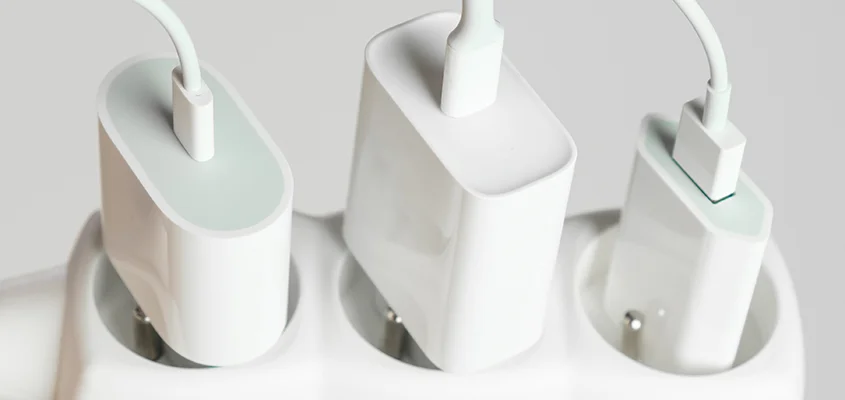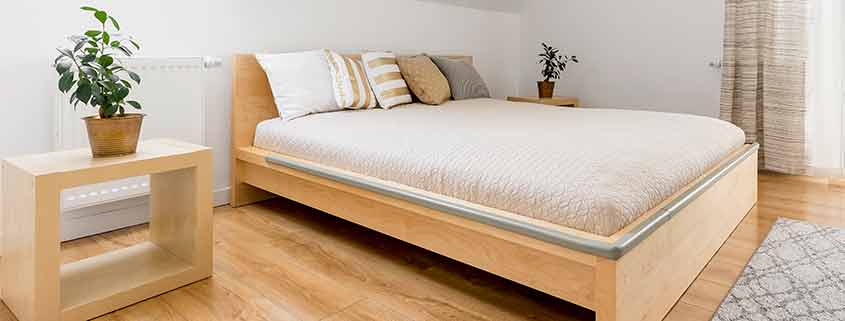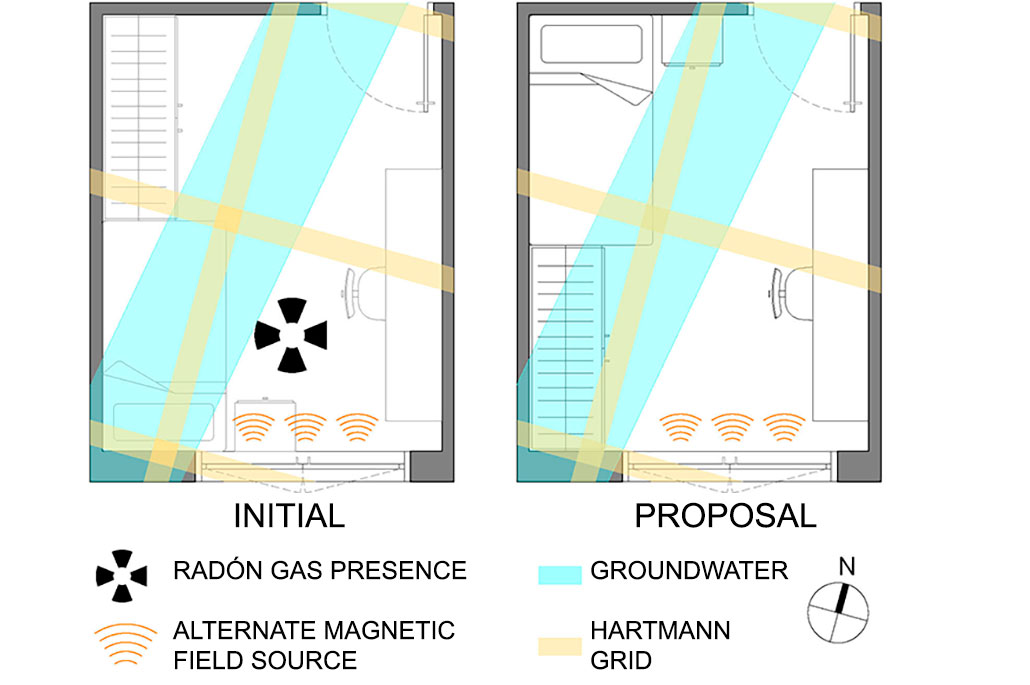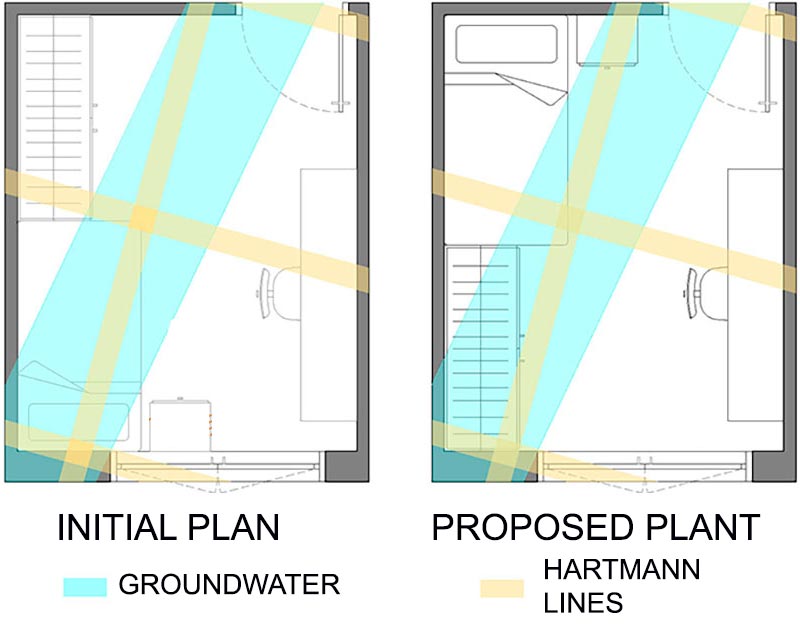WHAT CAUSES INSOMNIA?
Often, the cause of insomnia is not medical or caused by bad habits.
This article is dedicated to those people who wake up feeling as if they have not rested. Also those who suffer from daytime sleepiness and lack of energy, exhaustion, depression or irritability.
A bedroom exposed to electromagnetic pollution such as dozens of WiFis or a faulty electrical installation, located above a groundwater stream and with formaldehyde-contaminated air emitted by its furniture, is a candidate to cause sleep problems.
Science has identified that a natural bedroom, free of pollutants and closer to nature, helps sleep and improves quality of life.

ELECTROMAGNETIC POLLUTION
Electric and magnetic fields
The WHO reported in 2002 that exposure to electric fields and magnetic fields reduces the hormone melatonin, the sleep hormone (WHO volume 80).
The first step to reduce electric and magnetic fields in the bedroom is to unplug the bedside lamp, radio alarm clocks and cell phone charging cords that you are not necessary for sleeping and opt for a battery-operated alarm clock.
It is also possible that the electrical pollution is coming from an unprofessional electrical installation, or even from the electrical appliances that the neighbor has placed on the other side of your bedhead. These problems are detected in measurements of electromagnetic air pollution and have solutions, such as shunting the electric fields to ground or applying automatic disconnections.

Electromagnetic waves
Project Bioinitiative has analysed 1800 scientific studies on the health effects of electromagnetic waves and insomnia is a common symptom in multiple studies (Bioinititive report).
The first step is to program the nightly disconnection of the WiFi, take the mobile phone out of the bedroom and set the ECO+ function on the cordless phone to reduce internal sources of electromagnetic waves.
In cities, it is also common to be exposed to electromagnetic waves from neighbors or from a nearby telephone antenna. A professional measurement that identifies intense exposures and their source allows technical solutions to be applied to reduce radiation exposure in the bedroom.

AIR POLLUTION
Formaldehyde is the most toxic substance present in indoor air, and among its many effects is insomnia (American Agency for Toxic Substances). It is used in wood varnishes, melamine furniture, hygiene products, cosmetics, mattresses, etc.
In general, formaldehyde emissions are prevented by using mineral paints, solid furniture, natural cosmetics and natural cleaning products.
It is especially important that the materials we contact during the night are free of formaldehyde: mattress covers, sheets and pajamas made of organic cotton, if possible mattresses made of natural materials such as 100% natural latex and slatted bed bases that allow transpiration.
As a preventive measure, indoor plants such as potus, spathiphyllum, sansevieria or ficus help clean the air of formaldehyde and other volatile compounds. It is also important to ventilate frequently.

GEOBIOLOGY
The location of the bed is one of the most important factors in achieving a good night’s sleep.
A bed located above a groundwater stream or geological fissure will be located in a place where naturally occurring radiation is concentrated. These disturbances are commonly referred to as geopathic stress and are places where people do not sleep well or can get sick more easily (2018 scientific article).
The geobiological study evaluates the presence of geopathic stress and electromagnetic pollution in bedrooms and proposes solutions to wake up every day with energy and make the most of the day.






